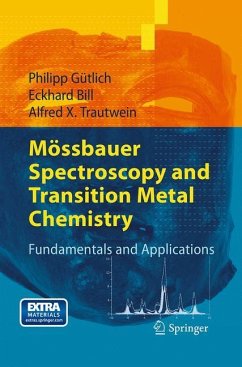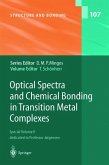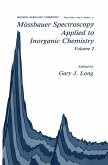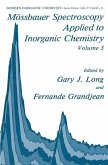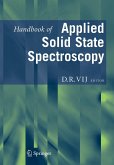concentrates on teaching techniques using as much theory as needed.application of the techniques to many problems of materials characterization.
Mössbauer spectroscopy is a profound analytical method which has nevertheless continued to develop. The authors now present a state-of-the art book which consists of two parts. The first part details the fundamentals of Mössbauer spectroscopy and is based on a book published in 1978 in the Springer series 'Inorganic Chemistry Concepts' by P. Gütlich, R. Link and A.X. Trautwein.
The second part covers useful practical aspects of measurements, and the application of the techniques to many problems of materials characterization. The update includes the use of synchroton radiation and many instructive and illustrative examples in fields such as solid state chemistry, biology and physics, materials and the geosciences, as well as industrial applications. Special chapters on magnetic relaxation phenomena (S. Morup) and computation of hyperfine interaction parameters (F. Neese) are also included.
The book concentrates on teaching the technique using theory as much as needed and as little as possible. The reader will learn the fundamentals of the technique and how to apply it to many problems of materials characterization. Transition metal chemistry, studied on the basis of the most widely used Mössbauer isotopes, will be in the foreground.
Mössbauer spectroscopy is a profound analytical method which has nevertheless continued to develop. The authors now present a state-of-the art book which consists of two parts. The first part details the fundamentals of Mössbauer spectroscopy and is based on a book published in 1978 in the Springer series 'Inorganic Chemistry Concepts' by P. Gütlich, R. Link and A.X. Trautwein.
The second part covers useful practical aspects of measurements, and the application of the techniques to many problems of materials characterization. The update includes the use of synchroton radiation and many instructive and illustrative examples in fields such as solid state chemistry, biology and physics, materials and the geosciences, as well as industrial applications. Special chapters on magnetic relaxation phenomena (S. Morup) and computation of hyperfine interaction parameters (F. Neese) are also included.
The book concentrates on teaching the technique using theory as much as needed and as little as possible. The reader will learn the fundamentals of the technique and how to apply it to many problems of materials characterization. Transition metal chemistry, studied on the basis of the most widely used Mössbauer isotopes, will be in the foreground.
From the reviews:
"This book is a revised, extended, and updated version of the 1978 edition by Gütlich, Link, and Trautwein. ... The reader will find examples of problems that have been treated previously by transmission Mössbauer spectroscopy; the parallel between the time and energy domain experiments is well explained and documented. In conclusion, this book is a valuable addition to the literature on Mössbauer spectroscopy and its applications. Some of the chapters will be most useful to a scientist new to the field ... ." (Fernande Grandjean, Journal of the American Chemical Society, Vol. 133, November, 2011)
"This book is a revised, extended, and updated version of the 1978 edition by Gütlich, Link, and Trautwein. ... The reader will find examples of problems that have been treated previously by transmission Mössbauer spectroscopy; the parallel between the time and energy domain experiments is well explained and documented. In conclusion, this book is a valuable addition to the literature on Mössbauer spectroscopy and its applications. Some of the chapters will be most useful to a scientist new to the field ... ." (Fernande Grandjean, Journal of the American Chemical Society, Vol. 133, November, 2011)

